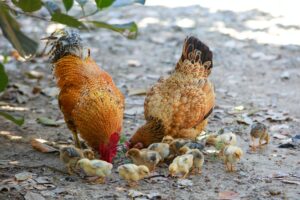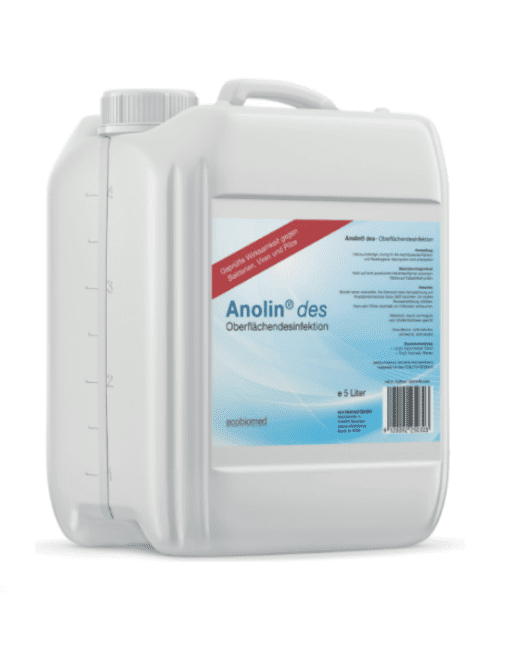Avian influenza
Avian influenza is a disease caused by influenza A viruses, of which there are several variants. This animal disease affects – as the name suggests – poultry, from chickens to waterfowl, and usually leads to the death of the animals. In individual cases, some variants can also be transmitted to humans and zoo animals. To date, approximately 1000 cases of avian influenza in humans have been reported worldwide. Of these, 20-50% died, depending on the pathogen subtype.
Symptoms:
Depending on the form of the disease, infection can manifest itself in different symptoms.

In acute form, the following symptoms may appear:
- General weakness (apathy, inappetence, dull, shaggy plumage).
- High fever
- Difficulty breathing with open beak
- Edema of the head, neck, comb, wattles, legs and feet
- Blue discoloration of the skin and mucous membranes
- Watery-mucous and greenish diarrhea
- Neurological disturbances (strange posture of the head, disturbances of motor function)
In a chronic course, egg laying decreases and eggs are thin-walled or shell-less.
Humans usually suffer from flu-like symptoms:
- Cough
- High fever
- Shortness of breath
- Sore throat
About half of those infected also complain of gastrointestinal symptoms.
Transmission
Transmission of the disease occurs through droplet infection via inhaled air or also via fecal particles. The pathogens of avian influenza are usually functional for only a few days, under favorable conditions even for many months. At 4°C, these viruses remain intact for 105 days in liquid manure, 30-35 days in feces and poultry meat or eggs, and for seven days at 20°C. However, transmission via cooked-through poultry products is impossible.
Disinfection
The likelihood of disease transmission can be greatly reduced by eliminating airborne viruses. With AnolinAir, these viruses can be easily eliminated by fogging.
Recent Posts
Haben Sie eine Frage?
Sprechen Sie direkt mit unserem Vertrieb:
- Valeria Foglar-Deinhardstein
- +43 676 6405517
- vfd@loxotec.com




